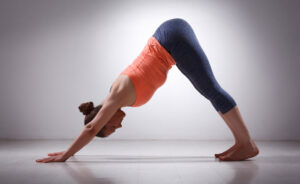Table of Contents
The New Mom’s Struggle – Fatigue & Muscle Soreness
As the hazy blur of labor fades, a new reality sets in for the journey of new motherhood – overwhelming fatigue. Those first few weeks feel like wading through a thick fog, every movement weighing heavily on muscles that have endured the marathon of childbirth.
The constant feeding, soothing, and care for this new tiny human quickly depletes any remaining reserves of energy. Eyelids droop with exhaustion as the minutes sluggishly tick by in those night-blurred hours of cluster feeding. Yet the mantra repeats – sleep when the baby sleeps – an elusive luxury when every creak and whimper triggers an instinctive startle response.
Not just the mind, but the body too pays a heavy toll. Abdominal muscles strain from the synchronized liftings – rising from seated to standing with baby in arms. Shoulders ache from cradling this newest, cherished weight. An array of aches and twinges serve as a physical reminder of the amazing fortitude of the female form.
Principles of rest, nutrition, and self-care take on a new urgency. Yet putting them into practice whilst tending to an infant’s needs often gets overridden by pure depletion. New mothers quickly learn to embrace life’s new normal – running on fumes, surviving on stolen moments of respite, and deriving strength from loving gazes at their babies.
Understanding the Why – The Science Behind Fatigue & Soreness
Why do those early postpartum weeks feel like a bizarre twilight zone of utter exhaustion and body aches? The reasons are rooted in the transformative physiological journey new mothers undergo.
Fatigue starts brewing well before childbirth. As the body diligently redirects its resources to nourish the growing baby, hormonal fluctuations can trigger relentless waves of fatigue. Surges in progesterone levels make new moms want to hibernate, while shifts in estrogen disrupt sleep patterns. It’s nature’s way of conserving energy reserves for labor’s monumental feat.
But the real fatigue onslaught begins postpartum when hormones abruptly plummet, mimicking a hormonal identity crisis of sorts. As levels of pregnancy-boosting hormones drop, the pituitary gland ramps up production of prolactin to initiate breastfeeding. This transitional hormonal chaos, coupled with disrupted sleep cycles from round-the-clock care, leaves new moms running on fumes.
Then there’s the muscle soreness – those lingering aches and twinges emanating from overexerted areas during labor’s physical marathon. Pelvic floor muscles endure intense trauma. Abdominal muscles get overstretched and strained. Simply carrying the baby’s weight creates neck and back strain from compensating for postural changes. It’s akin to running an ultramarathon without any training.
So while the joy of cradling that newborn provides solace, the underlying biological processes wreak temporary havoc on a new mom’s body and energy levels. With time, those raging hormone levels find equilibrium and overstretched muscles regain their tone and strength.
Yoga to the Rescue – How it Can Help
In those bleary-eyed postpartum days, when fatigue feels like a permanent state of being, the notion of exercise seems laughable. Yet the ancient practice of yoga may be just what the doctor ordered for restored vitality.
At its core, yoga combines mindful breathwork with physical postures to promote relaxation from the inside out. Those deep, conscious breaths instantly trigger the body’s “rest and digest” mode, lowering blood pressure and quieting the mind’s insistent chatter. As the breath slows, muscle tension melts away – a magical antidote to the lingering aches of childbirth and round-the-clock baby carrying.
But yoga’s restorative powers extend far beyond the muscles. The meditative mindset cultivated during a yoga session helps relieve the mental burdens that fuel insomnia – namely anxious thoughts and relentless overthinking. By focusing the mind on the present through breathwork, yoga clears the mental clutter to make space for quality sleep. And study after study backs up this correlation between yoga and improved sleep quality. [Link to Sleep Foundation article on bedtime yoga]
Then there are the mood-boosting benefits stemming from yoga’s regulation of key neurotransmitters like GABA, dopamine, and serotonin. As levels of these “happy chemicals” rise, anxiety and stress dissipate – emotions that run rampant in those early postpartum months. Harvard Health experts extol yoga’s ability to counteract depression, citing how its mind-body practice enhances resilience against stress.
So for the new mom seeking reprieve from fatigue’s cruel grip, sore limbs, and emotional turbulence, rolling out a yoga mat may be the ideal remedy. By restoring physical and mental equilibrium, yoga empowers new moms to embrace their temporary “new normal” with a bit more ease.
Safe Practices for You – Starting Your Yoga Journey
Before diving into downward dogs and warrior poses, new moms need to take it slow and steady on their yoga journey. The postpartum body is a delicate ecosystem that’s been through the ultimate transformation. Pushing too hard, too fast can do more harm than good.
The first step? Get the all-clear from your doctor or midwife, especially if you had a complicated delivery. Once you have their green light, tune into your body’s signals – discomfort is your cue to back off, not power through. Think of it like building up mileage for a marathon after an injury. You have to regain your strength patiently.
For those dealing with diastasis recti – that lovely parting of the abdominal muscles – certain poses are definite no-gos, at least initially. Any movements that bulge out the abdominal wall should be avoided until you’ve healed and regained core strength. The experts at the American Physical Therapy Association provide great guidance on safe exercises.
Similarly, the sacred pelvic floor muscles have been through the ultimate CrossFit workout during labor. Jumping right into intense twists, forward folds, or ab work could worsen any existing issues like incontinence or pelvic organ prolapse. Certified yoga therapists advise sticking to very gentle, no-floor-pressure poses in the early postpartum stage.
And let’s not forget the importance of that glorious yoking of breath and movement that gives yoga its name. Connecting to your breath helps prevent strain and re-centers your mind when those postpartum hormones have you feeling unmoored. The inhales energize, while conscious exhales melt away tension.
By honoring your body’s resilience without disrespecting its vulnerability, you set yourself up for a nurturing, sustainable yoga practice. One that restores your spirit as much as your body in those sacred but exhausting early months of mamahood.
Gentle Poses for Big Relief: Yoga’s Embrace in the Postpartum Journey
In the tender postpartum phase, your body deserves kindness and gentle nurturing. Yoga, with its repertoire of soothing poses, offers a sanctuary of relief and recovery. Here, we explore specific yoga poses that not only provide physical ease but also offer emotional solace, aiding in your journey to reclaiming your strength and serenity.
1. Poses for Enhanced Sleep
In the whirlwind of postpartum life, sleep becomes a coveted treasure. Gentle yoga poses like the “Legs-Up-The-Wall” invite tranquility and prepare your body for rest. This pose, known for its ability to calm the mind and relieve tired legs, can be a nightly ritual to invite deeper sleep.
2. Muscle Relaxation and Recovery
Postpartum bodies are heroes, having undergone profound changes and challenges. Yoga acknowledges this heroism with poses like “Cat-Cow,” which gently massages your spine and relieves the back tension common in new mothers. Another gem is the “Child’s Pose,” a humble yet profound stretch that eases the back, shoulders, and mind, offering a moment of peaceful surrender in your day.


Modifications for Every Mother
Each body is unique, especially in the postpartum period. Poses like the “Supported Bridge” can be modified with a cushion for extra comfort, ensuring you receive the benefits without strain. These modifications respect your body’s current state, allowing you to engage in yoga safely and effectively.

Grouping Poses for Your Well-being
Our categorization—focusing on sleep enhancement and muscle relaxation—aims to provide you with a structured approach to your yoga practice. Whether you seek a moment of peace, a stretch to soothe sore muscles, or a ritual to invite sleep, these poses are your allies, carefully chosen to support your postpartum recovery.
In this journey of gentle stretches and restorative poses, remember that each movement is a step toward healing and equilibrium. Your practice need not be lengthy; even a few minutes can imbue your day with a sense of calm and control.
As you integrate these poses into your routine, observe the subtle shifts in your body and mind. Embrace the gentle strength of yoga, allowing it to be a companion in your postpartum recovery, offering not just physical relief but also a tranquil space for emotional rejuvenation.
A Sample Routine for You
Alright, new mamas – putting it all together in a gentle routine to recenter your mind and body. Minimal time and props required! Grab a yoga mat, some pillows or blankets, and maybe some soothing music. You’ve got two options based on how much solitude you can grab:
The 15-Minute Recharge
1. Take a few grounding breaths in Child’s Pose to release any tension.
2. Move into Legs Up The Wall Pose for 2-3 minutes of restorative inversion.
3. Open up with Reclining Bound Angle Pose (Supta Baddha Kona) for 2 minutes per side.
4. Gently twist side to side with a Seated Spinal Twist for 1 minute per side.
5. Finish in Legs on Chair Pose for 3-5 minutes of blissful nothing.

Take it slow, listen to your body, and relish that stolen pocket of quiet time.
The 30-Minute Unwind
1. Elongate your spine in a Standing Forward Fold for 1 minute.
2. Transition to Child’s Pose for 2-3 minutes of conscious breathing.
3. Stay low in a Seated Forward Fold for 2 minutes to calm the mind.
4. Open those hips up with Reclining Bound Angle Pose for 3 minutes per side.
5. Give your back and shoulders some love with a Seated Spinal Twist for 2 minutes per side.
6. Shift to Legs Up The Wall Pose for a 5-minute inversion.
7. Let it all go in a Savasana-like Legs on Chair Pose for 5 minutes.




Whether you have a few minutes or a glorious half-hour, consider this your reset from the intense physical and emotional demands of mamahood. A reclamation of your breath, your body, and your sanity – even if momentarily. You’ve got this.
—
A Heart-to-Heart on Finding Your Peace Post-Baby
Hey there, new mama. Stepping into motherhood is like entering a whole new world, isn’t it? Between those precious baby snuggles and the never-ending diaper duty, finding a moment for yourself might seem like a distant dream. But here’s a little secret: carving out tiny oases of calm in your day can do wonders, not just for you, but for your baby too. Let’s chat about simple, doable ways to weave relaxation and self-care into your new routine, beyond your yoga mat.
Mindfulness: Little Moments of Big Peace
Imagine stealing a few quiet moments, just for you, amidst the whirl of motherhood. Mindfulness meditation is like that soft, comfy chair that’s waiting to embrace you after a long day. It’s about being present, savoring the stillness between baby’s giggles and cries, and finding a bit of peace amidst the chaos. You don’t need an hour—just a few minutes can recharge your spirit. If you’re wondering where to begin, mindful.org offers some sweet, simple guides to get you started. Think of it as your little pocket of tranquility.
Breathing: More Than Just a Lifeline
Ever notice how a deep, intentional breath can feel like a mini-vacation? That’s the magic of breathwork. It’s not about doing it right or wrong; it’s about giving yourself a moment to just… breathe. In those deep breaths, you’re not just a mom; you’re a woman taking care of herself, finding her center. And guess what? This can be done anywhere, anytime—while feeding, while baby naps, or even in those rare quiet moments alone.
Sleep Hygiene: Crafting Your Cozy Corner for Zzz’s
We know, we know—sleep is gold when you’ve got a newborn. But here’s the thing: quality trumps quantity. Setting up a nightly ritual, dimming the lights, maybe a little lavender scent in the air, can signal your brain that it’s time to wind down. It’s about creating a nest that whispers, “Relax, mama, you’ve got this.” For nuggets of wisdom on catching those precious Z’s, check out the American Academy of Sleep Medicine’s sleep tips. They’re like a lullaby for your sleep routine.
Finding Your Tribe: Leaning on Experts
In this beautiful, messy journey of motherhood, remember you’re not alone. Connecting with a yoga therapist or a friendly expert can be like finding a lighthouse in a stormy sea. They’re there to guide, support, and remind you that taking care of yourself is part of taking care of your baby. Curious? The folks at IAYT are wonderful guides in the world of therapeutic yoga.
In these transformative months, remember: nurturing yourself ripples out to your baby, your family, and beyond. It’s okay to start small, and it’s okay to ask for help. Because, in the end, a happy mama makes for a happy baby.
If you’re ever curious about how to blend these elements into a daily routine that feels like ‘you’, FlexifyMe is here, with open arms, ready to tailor a wellness journey just for you.


